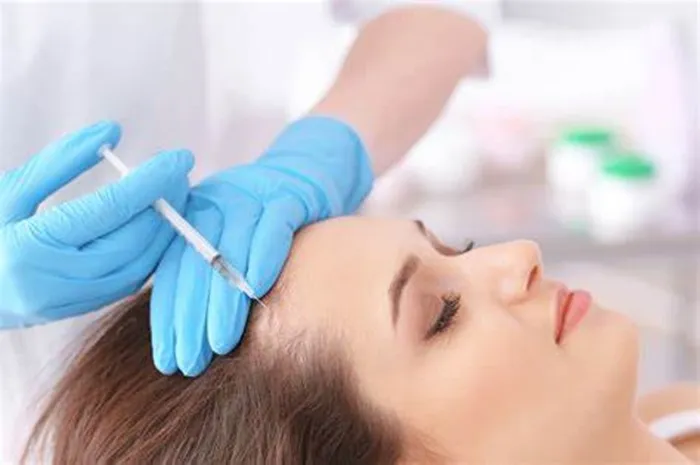Platelet – Rich Plasma (PRP) has gained significant popularity in the field of hair restoration and regenerative medicine. Renowned for its ability to stimulate hair follicle growth and promote tissue repair, PRP is hailed as a revolutionary treatment. However, like any medical intervention, it’s not without its drawbacks. Understanding the disadvantages of PRP is crucial for both patients and medical professionals to make well – informed decisions.
Variability in Treatment Results
Inconsistent PRP Preparation
One of the primary issues with PRP treatment is the lack of standardization in its preparation. Different clinics may use varying centrifugation techniques, resulting in PRP with different platelet concentrations and compositions. The concentration of growth factors in PRP, which are crucial for its effectiveness, can vary widely. This inconsistency makes it challenging to predict the outcome of the treatment. For example, a lower – than – optimal concentration of platelets may fail to stimulate hair follicles adequately, leading to subpar hair regrowth.
Individual Response Variation
Another factor contributing to variable treatment results is the significant individual variation in response to PRP. Each person’s body reacts differently to the treatment. Some patients may experience remarkable hair regrowth, while others may see minimal or no improvement. This unpredictability can be frustrating for patients who invest time and money in the treatment, expecting a specific outcome.
Multiple Sessions and High Costs
Need for Repeated Treatments
PRP treatment typically requires multiple sessions to achieve optimal results. In the context of hair restoration, patients may need to undergo three to six sessions, spaced four to six weeks apart. This not only demands a significant time commitment but also increases the overall cost of the treatment. The need for repeated injections can be inconvenient for patients with busy schedules, and the financial burden may be prohibitive for some.
Expensive Procedure
The cost of PRP treatment can be relatively high. This is due to several factors, including the cost of blood collection, centrifugation equipment, and the expertise of the medical staff. The overall expense may be a deterrent for many patients seeking a more affordable hair restoration solution.
Potential Side Effects and Complications
Injection – Site Reactions
PRP treatment involves injecting the concentrated plasma into the scalp. This can lead to injection – site reactions, such as pain, swelling, bruising, and redness. These side effects are usually mild and resolve within a few days. However, in some cases, they can be more severe, causing discomfort and interfering with daily activities.
Infection Risk
There’s a small but real risk of infection associated with PRP injections. The injection process creates puncture wounds in the scalp, providing an entry point for bacteria. Although clinics take strict sterilization measures, the risk of infection cannot be completely eliminated. Infections can delay the healing process and potentially lead to more serious complications.
Hypersensitivity Reactions
Some patients may be allergic to components in the PRP or the substances used during the treatment process. Hypersensitivity reactions can range from mild itching and rash to severe anaphylactic shock. Identifying potential allergies before the treatment is crucial, but in some cases, reactions may still occur.
Long – Term Effects and Unknowns
Lack of Long – Term Data
Despite its growing popularity, there’s a lack of long – term data on the effects of PRP treatment. It’s unclear whether the initial positive results will be maintained over an extended period. The long – term impact of repeated PRP injections on the scalp and overall health is also not well – understood.
Potential for Immune System Imbalance
As PRP interacts with the immune system, there’s a concern that repeated or excessive use could disrupt the body’s immune balance. Over – stimulation or suppression of the immune system may increase the risk of developing autoimmune diseases or infections.
Mitigating the Disadvantages of PRP
Standardizing PRP Preparation
To address the issue of inconsistent results, the medical community should work towards standardizing the PRP preparation process. This includes establishing guidelines for centrifugation speed, duration, and the collection of components. Standardization would help ensure that patients receive a consistent and effective treatment.
Comprehensive Patient Evaluation
Medical professionals should conduct a thorough evaluation of patients before recommending PRP treatment. This evaluation should include a detailed medical history, scalp examination, and assessment of individual expectations. By understanding each patient’s unique situation, doctors can better manage expectations and identify potential risks.
Conclusion
While PRP offers promising benefits in hair restoration and other medical applications, it’s essential to be aware of its disadvantages. From variable treatment results and high costs to potential side effects and long – term uncertainties, patients and medical providers must weigh the pros and cons carefully. By addressing the challenges associated with PRP and taking appropriate precautions, it’s possible to optimize the treatment’s effectiveness and minimize its drawbacks.
Related topics:
- The Cost of PRP for Hair Loss: A Comprehensive Guide
- How Much Effective Is PRP for Hair Loss: What You Need To Know
- How to Stop Hair Loss from Blood Pressure Medication


